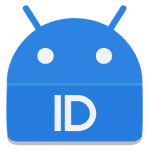Say you’re a developer (or working with a developer) that needs to get a Samsung GearVR app into the hands of your testers.
It’s not as simple as building an APK and sending a link. If you want to run your application on a GearVR you need to have included the Oculus Signature (OSIG) file within your build.
GearVR OSIG Certificate Files
Samsung and Oculus have used the same approach as Apple in regards to being able to test applications running outside of the official store by requiring each test device to have a specially signed certificate file that is included into your build. To be fair, GearVR is a little simpler then Apple, as you can use the same OSIG file with any of your applications – unlike Apple which needs a new provisioning file per application.
Generating an OSIG is an easy 2 step process as long as you know how to find the hardware serial – which is not the IMEI or other serial identifier. Unfortunately, the hardware serial number is not shown in any of the Settings within the phone.
Step 1 – Obtain the device Hardware Serial Number
Option 1 – ADB Developer Tool
If you are a developer and have access to the phone, you simply plugin in the phone via USB (assuming it’s setup for development), and run:
> adb devices List of devices attached ce0551e7 device
The ce0551e7 is the hardware serial number.
Option 2 – Play Store App (non developer)
Go to the Google PlayStore and download the “Device ID” app by Evozi:
Run an app, scroll down to “Hardware Serial” and tap on that field then press SHARE to send it to your developer.
Step 2 – Generate the OSIG File
Visit the Oculus OSIG Signing page: (developer account required)
https://dashboard.oculus.com/tools/osig-generator/
Paste in the hardware serial number and press download file.
Send the 0000000000.osig file to your developer to include in the build.

Leave a Reply